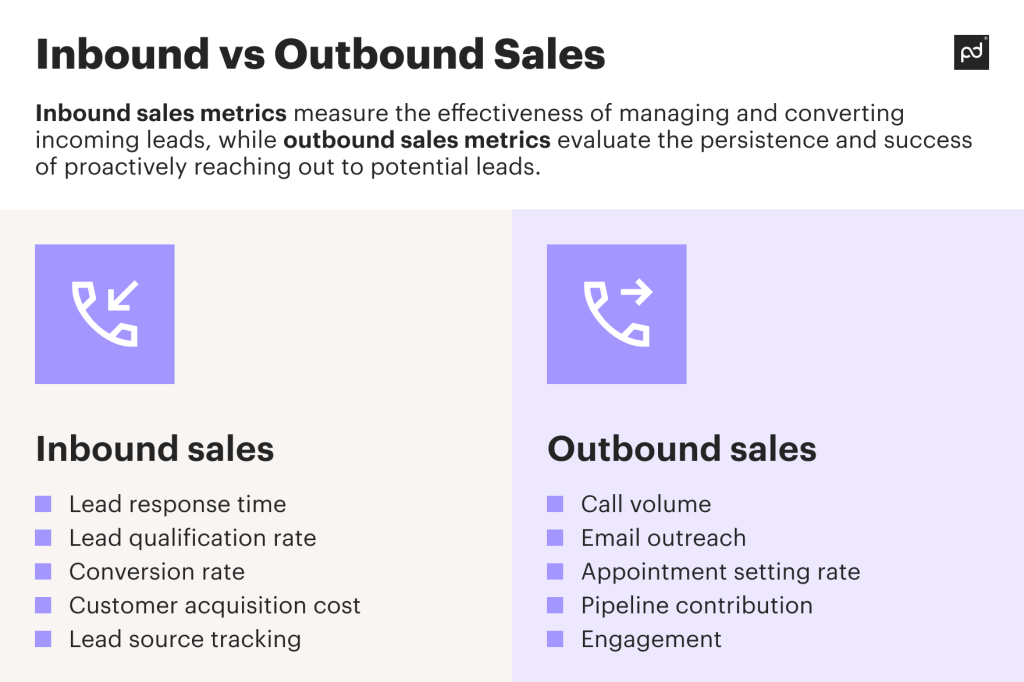Several years ago, it was easier for marketing to generate leads that could be quickly identified and qualified by sales development reps (SDRs) to find potential buyers.
Today, however, there has been a significant decline in quality conversations (QCs) per SDR.
According to The Bridge Group, the average rate is now 3.6 QCs per day, reflecting a staggering 55% drop since 2014, averaging a 10% annual decline.1
With the work becoming arduous for SDRs, the meticulous tracking of performance metrics offers a way out. Monitoring SDR metrics allows organizations to pinpoint struggles and implement targeted strategies to boost performance.
So, what types of SDR metrics should you track, and how can you do it efficiently? Keep reading to find out.
The role of sales development representatives
Sales development representatives (SDRs) bridge the gap between marketing and sales by identifying high-potential prospects through emails, social media, and calls.
They nurture and qualify these leads, enabling sales reps to focus on high-potential opportunities and boosting conversion rates.

Additionally, SDRs provide valuable feedback to marketing teams, refining strategies to generate more high-quality leads.
Why measuring SDR metrics is crucial
The collection and analysis of SDR metrics translates to straight value for your sales team. Here are a few reasons why:
- Tracking SDR metrics enhances organizational performance by refining sales and marketing strategies and fostering collaboration between departments.
- Measuring these metrics provides insights that help SDRs adopt data-driven approaches, leading to more effective outreach and meaningful lead interactions.
- Metrics also strengthen the marketing-sales bond through a productive feedback loop and targeted efforts.
- Consistent monitoring ensures accountability, transparency, and alignment with high standards in the sales process.
Inbound SDR metrics
Inbound SDR metrics help teams gauge how effectively they manage incoming leads, from response times to conversion rates. Here are the five inbound metrics to track.
1. Lead response time
The faster an SDR responds, the higher the chance is to convert a lead into a customer. Here is the formula:
Average lead response time = Total response time (minutes) / Number of leads responded to
For example, if an SDR responds to 50 leads in a total of 150 minutes, their average response time is 3 minutes per lead.
2. Lead qualification rate
This metric shows how effectively an SDR identifies leads likely to convert. Calculate it with:
Lead qualification rate = (Number of qualified leads / Total leads) * 100
Imagine that an average SDR qualifies 30 out of 100 leads — their lead qualification is 30%.
3. Conversion rate
This tracks the percentage of leads converted into opportunities. Here is the formula:
Conversion rate = (Number of сonversions / Total leads) * 100
So, if 10 out of 50 leads that an SDR contacts convert, the conversion rate is 20%.
4. Customer acquisition cost (CAC)
When it comes to converting a lead into a customer, there are associated costs that can be calculated using this formula:
Customer acquisition cost = Total sales and marketing costs / Number of new customers
These costs typically include marketing expenses for advertising, content production, or sponsorship. You also factor in salaries and expenses, like CRM software.
5. Lead source tracking
Use this formula to identify the origin of the most effective leads:
Effective lead sources = Number of leads from source X / Total leads from all sources
For example, if an SDR finds that a qualified lead came from an email campaign rather than social media, it makes sense to allocate more resources to email marketing.

Outbound SDR metrics
Outbound SDR metrics gauge the persistence and effectiveness of SDRs in contacting leads and the quality of those interactions. Here are five key metrics to track on the outbound side.
Outbound call volume
Monitoring call volume helps set realistic performance targets.
For example, if an SDR targets 50 calls per day and consistently meets or exceeds this mark, it indicates high performance and alignment with sales strategies.
Email outreach metrics
Metrics like open rates, response rates, and conversion rates provide insights into email campaign effectiveness, helping teams optimize content, timing, and audience segmentation.
Appointment setting rate
This rate measures how many contacts SDRs convert into sales meetings, reflecting their persuasiveness. Enhancing call scripts or providing additional training can boost this rate.
Pipeline contribution
This metric assesses the number and value of opportunities in the sales pipeline generated by SDRs.
As an example, if an SDR generates $100,000 in potential sales in a quarter, it helps managers evaluate outbound strategies and plan resources.
Engagement metrics
Multi-channel engagement metrics identify the most effective channels and messages.
For instance, follow-up calls may be more effective than initial contacts, or LinkedIn interactions might generate more engagement than Twitter.
How to implement SDR metrics in your organization
Use SDR metrics to optimize performance, similar to how a mechanic relies on diagnostic tools to fine-tune a race car. Here are the steps to get started:
- Identify key metrics: Focus on metrics like lead response time and conversion rates, or others that monitor your sales team’s speed and efficiency.
- Set clear goals and benchmarks: Define what success looks like and set specific targets for each metric, like setting your GPS before a road trip.
- Use relevant technology: Implement modern sales software, CRM integrations, and analytics tools to track metrics automatically and stay on course toward your sales goals.
- Provide regular training: Continuously train your team on the importance of SDR metrics and how they impact organizational goals.
- Track SDR performance and provide feedback: Let them know how they’re doing! Working together, you can adjust strategies to ensure continuous improvement.
- Stay aligned with business goals: Ensure SDR metrics support broader company objectives, making every effort relevant and valuable.
Boost your sales KPIs with PandaDoc tools
As we’ve demonstrated in this article, the beginning of the sales process is every bit as important as the end — and SDR teams are empowered when sales metrics and KPIs are measured, understood, and optimized.
With metrics generating insights, SDRs can better nurture leads.
And by leveraging sales enablement software, the entire sales department can enjoy dramatically less paperwork, boost customer engagement, and start seeing higher closure rates.
Disclaimer
PandaDoc is not a law firm, or a substitute for an attorney or law firm. This page is not intended to and does not provide legal advice. Should you have legal questions on the validity of e-signatures or digital signatures and the enforceability thereof, please consult with an attorney or law firm. Use of PandaDoc services are governed by our Terms of Use and Privacy Policy.
Originally published January 19, 2016, updated August 28, 2024


